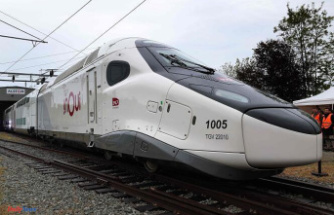After the announced reduction in gas supplies by the Russian state-owned company Gazprom, gas prices are rising noticeably. The European future increases by more than seven percent to 175 euros per megawatt hour.
The announcement of lower supplies by Russia has caused natural gas prices to rise significantly. Today, Monday, the futures contract TTF, which is regarded as trend-setting, rose to 175 euros per megawatt hour on the energy exchange in the Netherlands. That is an increase of 7.7 percent compared to Friday.
The Russian gas company Gazprom further cuts supplies through the Baltic Sea pipeline Nord Stream 1. According to the company, from July 27 at 6:00 a.m. CEST, 20 percent or 33 million cubic meters of gas will flow through the most important supply pipeline to Germany every day. The reason is the repair of another turbine.
The European Union and especially Germany are heavily dependent on Russian gas. The markets fear a complete end to gas supplies, which would weigh heavily on the European economy. Gas deliveries via the currently most important connection to Germany for Russian natural gas were only resumed on Thursday after a ten-day routine maintenance.
Kremlin chief Vladimir Putin had already threatened last week that there could be a further cut in gas supplies via Nord Stream 1 around July 26. He had referred to turbines used by the Russian energy company. According to this, a throttling is possible if a turbine repaired in Canada is not available again in time. Another turbine should therefore be sent around July 26 for repairs.
Gas deliveries via the currently most important connection to Germany for Russian natural gas were only resumed on Thursday after a ten-day routine maintenance. As early as June, Gazprom had reduced deliveries via the pipeline to 40 percent of maximum capacity and referred to the turbine being sent to Canada for repairs. The federal government considers this to be a pretext.












